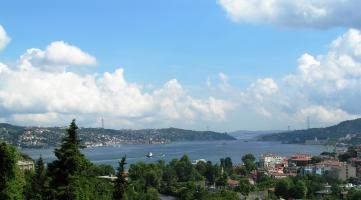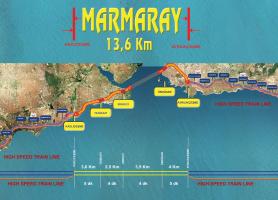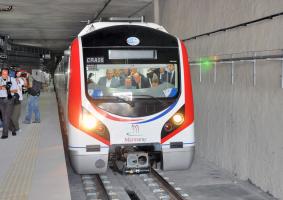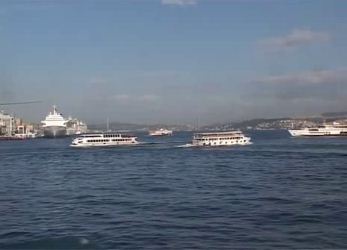The Bosphorus tunnel: Istanbul united
Tuesday 29 October saw the inauguration of the Marmaray rail tunnel, under the Bosphorus in Istanbul, Turkey. It is a metropolis built on history and division, and this epic project – the EIB’s largest outside the EU- will make it ever more unified on both human and continental levels.
Istanbul is not the same city it was in 1860, when the first proposals to build a tunnel under the Bosphorus were mooted. At that time, the technology to construct the tunnel under the seabed simply did not exist. The engineers instead suggested perching it atop a line of pillars beneath the surface of the Strait of Istanbul, like a submarine monorail. Some years later, the idea was revisited, but this time the plan was to place the tunnel on the seabed. This scheme too fell by the wayside.
Now, 153 years after the idea emerged, the Marmaray tunnel has been inaugurated as part of a radical overhaul of Istanbul’s urban rail services, and one of the world’s most ambitious urban transport schemes. Its opening marks the culmination of a nine year involvement for the EIB during which the Bank has invested EUR 1.05bn in its largest ever project outside the EU. The tunnel breaks further ground, however. It is has been bored at a depth of 56m below the floor of the Bosphorus. For an immersed tunnel, this is unprecedented.
The challenge was immense. Istanbul sits in one of Turkey’s most active seismic zones. It is an economic powerhouse with a population of over 12 million. Many others enter the city to work every day. A combined total of over one million trips are made daily across the Bosphorus and at rush hour, crossing the city can take up to five hours.
These journeys are split between the two bridges and the ferry services which must deal with heavy currents and follow byzantine routes between congested shipping lanes. Adding the marine construction and dredging equipment required for the tunnel project into this mix only increased the strain on this most narrow and crowded of waterways.
Overground, the project includes fitting modern commuter rail infrastructure into the narrow corridors of an older system as well as a rail connection between Europe and Asia for InterCity and freight trains. As part of this, over 73km of new track is being laid and37 existing stations are being upgraded and expanded. Three new underground ones have also been built, while the Marmaray project includes 13.6km of double track tunnel, of which 1.3km is under the strait itself.
It is anticipated that the improved rail services and proper network integration of both sides of Istanbul will attract over 1.5m passengers to the tunnel on a daily basis. This huge modal shift is expected to result in a reduction in greenhouse gas emissions of 144 000 tonnes per year, improving the air quality and reducing noise pollution in Turkey’s largest metropolis.
The Bosphorus conjures notions of dividing the Asian and European sides of Istanbul. This tunnel connects one side of Istanbul to another, strengthens the city’s position as a hub between East and West and forges closer ties between Turkey and the EU.




